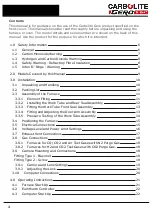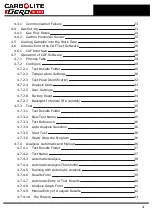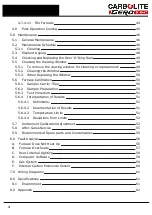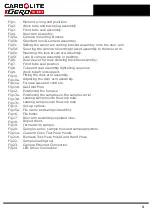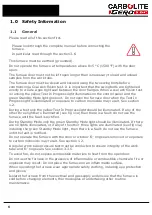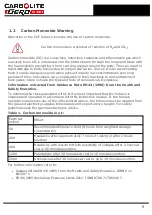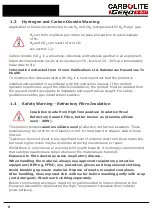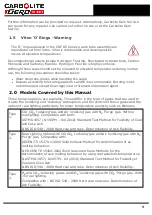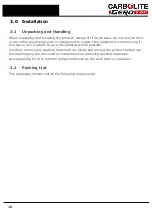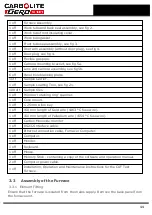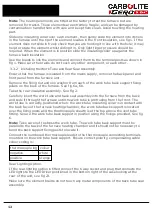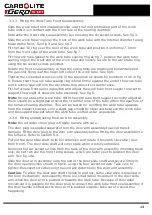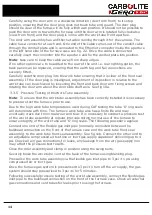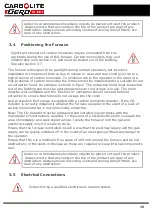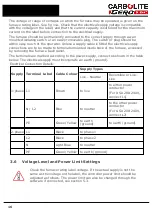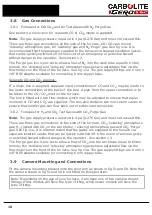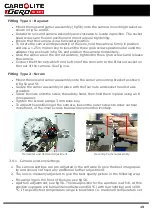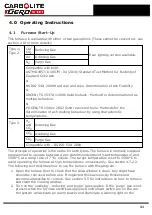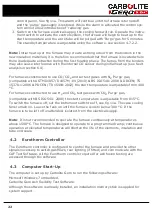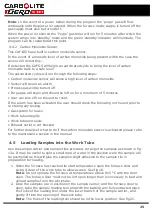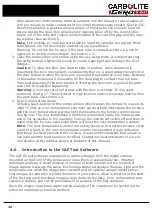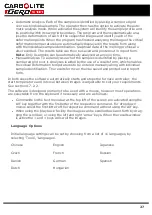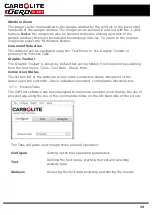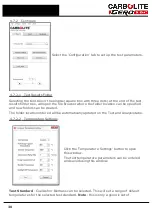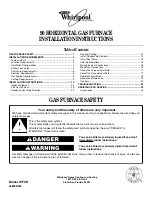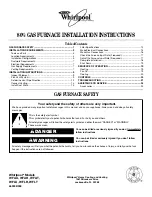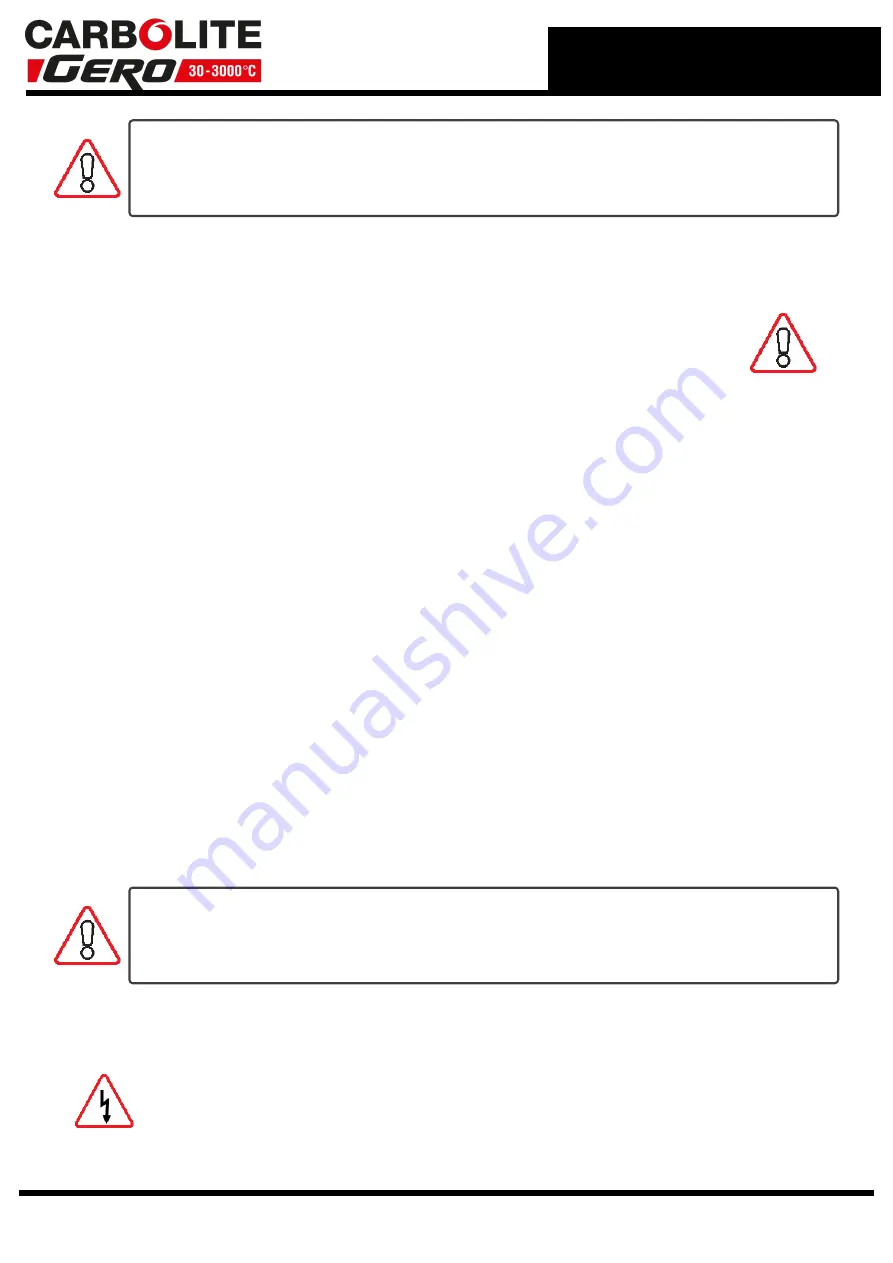
Under no circumstances should any objects be placed on top of the product.
Always ensure that any vents on the top of the product are clear of any
obstruction. Always ensure all cooling vents and cooling fans (if fitted) are
clear of any obstruction.
3.4
Positioning the Furnace
Significant amounts of carbon monoxide may be exhausted from the
work tube during the use of this furnace. Carbon monoxide is toxic and
inflammable (see section 1.2) and must be ducted out of the building.
See also section 3.7.
The furnace is designed to be gas tight during normal operation, but incorrect
installation or component failures due to misuse or wear and tear could give rise to a
high presence of carbon monoxide. To minimise risk to the operator in the event of a
high presence of carbon monoxide the furnace must be installed under a suitable forced
air extraction hood. An example is shown in fig 12. The extraction hood must be ducted
out of the building and must be operating whenever the furnace is in use. The room
must be well ventilated and the ‘fresh air in’ ventilation should exceed the hood
extraction to ensure that fumes do not escape into the room.
As a precaution the furnace is supplied with a carbon monoxide detector. If the CO
detector is correctly installed it will alert the furnace operator in the event of a leak of
carbon monoxide that is not removed by extraction.
Note: The CO detector must be positioned and installed in accordance with the
manufacturer’s instructions supplied. In the event of a CO detector alarm evacuate the
area immediately and seek expert advice. Isolate the furnace from the gas and
electricity supply only if it is safe to do so.
Ensure that the furnace is installed in such a way that the electrical supply and the gas
supply can be quickly switched off in the event of an emergency without any danger to
the operator.
Ensure that there is a minimum free space of 100 mm around the furnace and do not
obstruct any of the vents in the case as these are required to keep internal components
cool.
Under no circumstances should any objects be placed on top of the product.
Always ensure that any vents on the top of the product are clear of any
obstruction. Always ensure all cooling vents and cooling fans (if fitted) are
clear of any obstruction.
3.5
Electrical Connections
Connection by a qualified electrician is recommended.
15
Summary of Contents for CARBOLITE GERO CAF G5
Page 63: ...Fig 3 Front Tube Seal Assembly Fig 4 Door Arm Assembly 63 ...
Page 64: ...Fig 5a Camera Mounting Bracket Fig 5b Lens and Camera Assembly 64 ...
Page 65: ...Fig 5c Sliding the Camera Mounting Bracket Assembly onto the Door Arm 65 ...
Page 66: ...Fig 5d Securing the Camera Mounting Bracket Assembly to the Door Arm 66 ...
Page 67: ...Fig 5e Mounting the Lens and Camera Assembly 67 ...
Page 68: ...Fig 5f Lens and Camera Assembly in Position 68 ...
Page 69: ...Fig 6a Rear View of the Standard CAF G5 Furnace Showing Brick Box Assembly 69 ...
Page 71: ...Fig 7 Front Tube Seal Position 71 ...
Page 72: ...Fig 8 Tube End Seal Assembly Tightening Sequence Fig 9 Work Tube Front Support 72 ...
Page 73: ...Fig 10 Fitting the Door Arm Assembly Fig 10a Adjusting the Door Arm Assembly 73 ...
Page 74: ...Fig 11a Furnace Case and Controls 74 ...
Page 75: ...Fig 11b Gas Inlet Pipe Fig 12 Positioning the Furnace 75 ...
Page 77: ...Fig 13c Loading Samples into the Work Tube 77 ...
Page 78: ...Fig 16 File Folder 78 ...
Page 79: ...Fig 17 Door Arm Assembly Exploded View 79 ...
Page 82: ...SST DT HT FT Fig 18 Report Sheet Page 2 Side View Plan View Fig 19 Formed Wire Sample 82 ...
Page 83: ...Fig 20 Sample Carrier Sample Tiles and Sample Positions 83 ...
Page 84: ...Fig 21a Coal and Coke Test Piece Mould Fig 21b Biomass Test Piece Mould and Hand Press 84 ...
Page 85: ...Fig 22 Sample Loading Tool Fig 23 Camera Ethernet Connection 85 ...
Page 86: ...Fig 24 LED Driver Connection 86 ...
Page 87: ...Notes Service Record Engineer Name Date Record of Work ...


